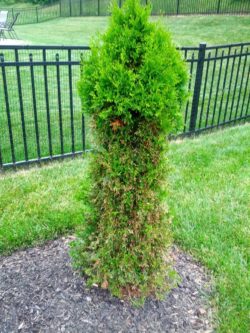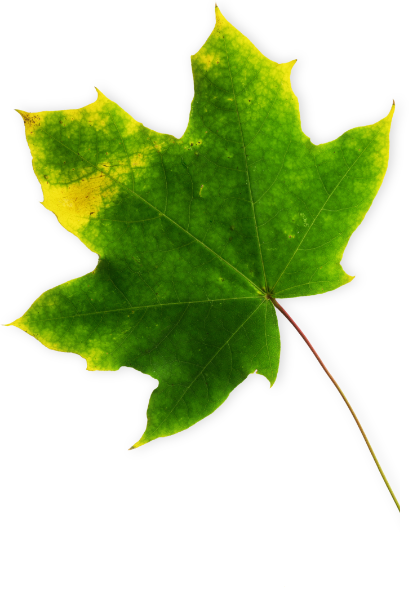 Have you ever woken up in the morning, gazed out your window, only to notice your arborvitae are destroyed? Even more peculiar there is still green growth, seemingly untouched, from the middle up. The culprit, in this case, is more than likely deer! This raises a common homeowner question, “how can I prevent deer from eating my arborvitae?”
Have you ever woken up in the morning, gazed out your window, only to notice your arborvitae are destroyed? Even more peculiar there is still green growth, seemingly untouched, from the middle up. The culprit, in this case, is more than likely deer! This raises a common homeowner question, “how can I prevent deer from eating my arborvitae?”
Deer will feed on many varieties of plants ranging from small herbaceous plants to trees and shrubs. When food becomes scarce in the forest during winter, deer pressure becomes very high on residential landscapes. This is the time of the year when we see deer feeding mostly on evergreen plants like arborvitae, rhododendron, yew, hemlock, and euonymus. Deciduous shrubs and small trees may also be fed on in the winter, but they are less palatable and tend to be fed on less especially if other options are around.
As spring and summer bring more succulent plants, and new growth emerges, deer will change their diet. The tender foliage and shoots are much more nutritious and therefore preferred when available, often reducing pressure on evergreen plants during the growing season.
There are several factors that can control how much damage deer will do in a landscape:
- Individual and shared experience from other deer
- Health
- The availability of food
- Accessibility of alternative sites
- History of damage
- Weather conditions, and
- Size of the local population
The key to reducing deer browse is to understand these factors and interrupt their normal behavior. There are several methods of reducing deer browsing. Let’s discuss these three examples in more detail:
- Deer fencing which forms a physical barrier to the susceptible plants.
- Planting plants that are inherently more resistant to deer feeding.
- Repellents.
Deer Fencing
There are many types of deer fencing ranging from protecting individual plants to fencing in an entire yard. Although this can be a more permanent solution, it can also be very expensive and there are some downsides. Wooden fencing can also act as a privacy screen if desired or black netting systems are available for a more natural look.
Deer are capable of jumping very high, so fencing to exclude deer needs to be at least 8’ to keep them from jumping over. Another factor sometimes overlooked is unless the fencing is complete or with gates sealing of the yard completely, deer may find themselves on the wrong side rendering the fence, less effective. The netting type fencing is less visible to people, but also to deer and can be damaged by deer trying to pass through not aware that it is there.
Deer-Resistant Plants
 If you live in an area where deer populations are high, planting deer-resistant species is a reasonable solution. However, this reduces the assortment of plants you can choose from and will not help any established trees, shrubs and other perennials in your yard.
If you live in an area where deer populations are high, planting deer-resistant species is a reasonable solution. However, this reduces the assortment of plants you can choose from and will not help any established trees, shrubs and other perennials in your yard.
Integrating more deer-resistant plants combined with the use of repellants can reduce deer browse. This combination will also give you the flexibility of designing your landscape with more of the varieties you want and being completely transparent. For additional reading, check out UMass Amherst’s list of Perennial plants resistant to deer.
Deer Repellents
Repellents create the essence of a fence without physical obstruction. There are a few ways repellents can deter deer. They either cause the plants to taste or smell bad or scare deer by making them think predators are around. Repellents can be applied to plants directly or used as an area treatment creating a chemical barrier. Studies from the USDA Forest Service and the University of Massachusetts have shown that the proper use of certain deer repellents can make dramatic differences.
At Natural Tree and Lawn, our Deer Repellant Program is flexible and can be done every other month or monthly depending on deer pressure. If the only plants being eaten are evergreens then you may only need fall and winter applications. Regular applications can help manage your deer problems by changing their feeding patterns, encouraging them to feed elsewhere. We use a product that will repel deer by smell and taste, but also has components that can scare deer. After about 24 hours the odor dissipates, but remains detectable to deer with a much more sensitive sense of smell, for up to 2 months.
If you have a problem with deer browsing in your yard we can help! Call us today at (781) 297-3674 or send an email to info@naturaltree.com.
